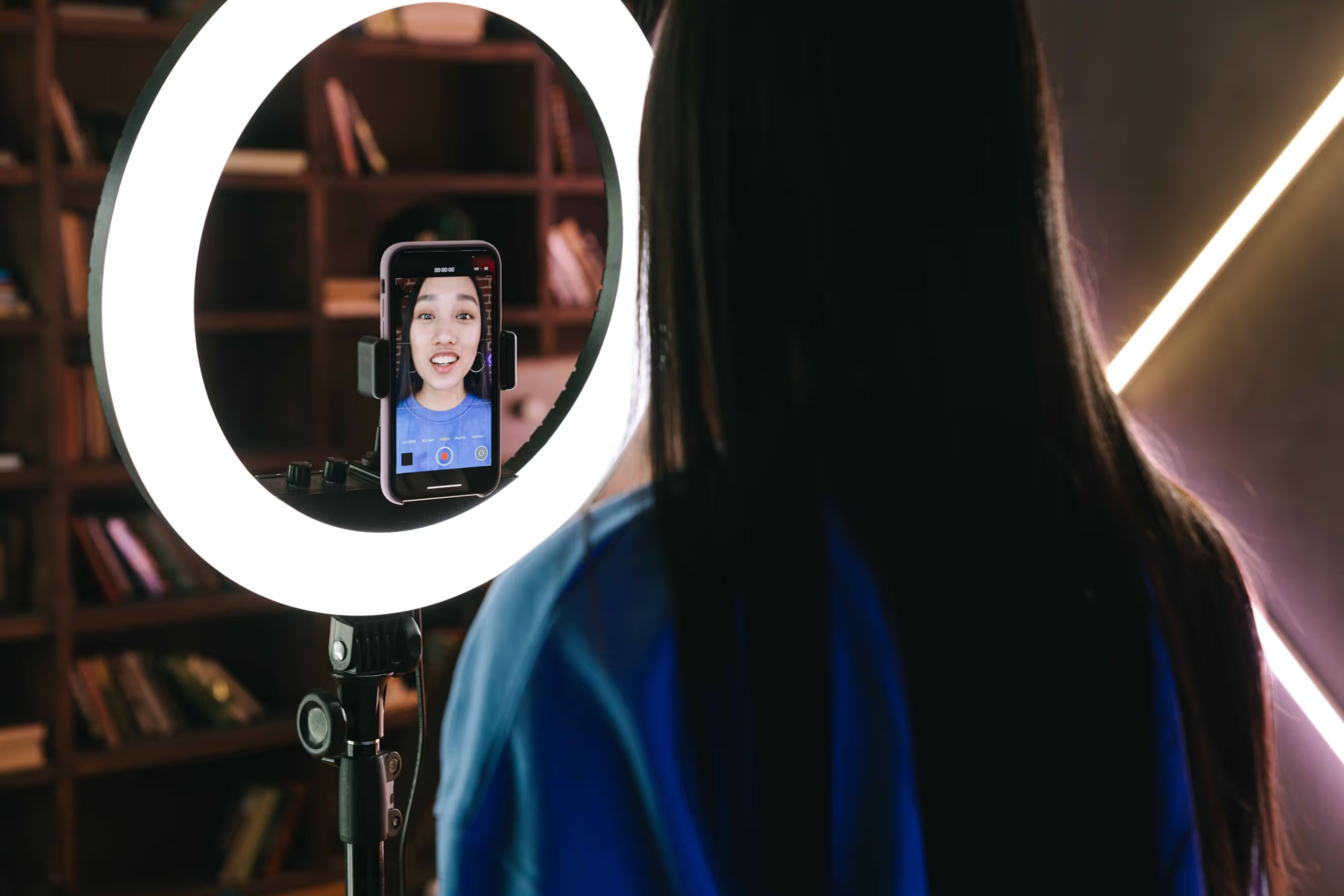When you make video content, going viral is one of the best things that can happen to that content. In fact, just one video going viral can supercharge any marketing effort and make it much more successful than it would be otherwise. It builds your audience as a creator and brings new people into your content channels.
But just how many views is “viral?” And how can you ensure that your content has as good a chance of going viral as possible? Read on for the answers to these questions and more.
What does it mean to go viral?
In a nutshell, when a video “goes viral,” it means that a video has become so popular that it now spreads exponentially across the Internet and multiple social media platforms like Facebook, Instagram, TikTok, and YouTube.
When something goes viral you don’t have to post and share the video repeatedly to ensure it gets an increasing number of views. Instead, people voluntarily share the video content or social media algorithms automatically put the content on the screens of users.
Think of going viral as reaching a threshold of growth. A point beyond which the video’s popularity and view count grows faster than you can control. For most marketing purposes, going viral is a good thing. It means that a given advertisement or piece of video content is going to be seen by many more people than initially projected.
That’s an amazing benefit, especially considering the fact that video accounts for over 80% of all Internet traffic. Meaning that the competition for video marketing materials is higher than ever. On top of that, average individuals watch around 100 minutes of video content each day.
Bottom line: You want your video marketing content to go viral since you’ll spread your marketing messages more effectively and more widely than otherwise.
{{socialmedia-component="/blog-shortcodes/blog-popup"}}

How many views is considered viral?
There’s no set number or goal for what constitutes a “viral video.” In fact, what counts as viral can vary from platform to platform or business to business.
That said, many marketing experts and business owners consider a video to have gone viral if it gets at least 5 million views within about a week of its initial posting. For example, if you post a new video on a Monday, and it has accumulated 6 million views by the following Sunday, it’s a safe bet that that video has indeed gone viral.
By accumulating millions of views in a week or less, the video has proven its popularity and is almost certain to draw the attention of social media platform algorithms. Those algorithms, in turn, will post the video content in question to the front pages of their platforms. This allows even more people to view the videos and bump up the view count higher.
In this way, when a video goes viral, it accumulates even more views than it did before, snowballing in popularity and effectiveness.
How many views is viral on TikTok?
As noted above, there’s no guaranteed limit or view count that you need to target for your video to go viral. However, if you are trying to market effectively with video content on TikTok, you should try to create content that accumulates 3 to 5 million views in a week or less.
TikTok is a fast-moving social media platform, and people post new video content all the time. Therefore, the more views you can rack up in the first three to five days, the better. This will almost guarantee that the video content will be picked up by the TikTok algorithm, helping it achieve viral status.
How many views is viral on Instagram?
On Instagram, you have a little extra time for your video content to truly go viral. That said, you should still try to accumulate five million views or so in one week to achieve viral content status.
Remember that your Facebook social media posting can help to drive views to your Instagram videos and vice versa. That’s because Instagram is owned by Facebook, so the two platforms are much more integrated than other social media sites. Use other marketing tools, like sending SMS text messages to customers, to also drive views to your video in the first few days after they are posted.
What makes a video go viral?
Generally, a few key factors help to determine whether a video goes viral or not. Those factors are:
- Entertainment value: Generally, the more entertaining a piece of content is, the greater the number of views it will accumulate in no time. This is true even if the content is meant to be informative or advertising.
- Memorability or uniqueness: People want to see things they haven’t seen before. If your content is too similar to the types of content put out by other creators, it will be less likely to go viral.
- Authenticity: People want to see authentic, “homemade” content that doesn’t feel like it was put together by a big studio. If you can replicate this feeling, your video will be more likely to go viral than otherwise.
Viral videos share these similarities in general. However, popularity trends can vary and shift with time. So you have to pay close attention to the video content marketing scene to pick up on trends and emulate them for maximum virality.

How to go viral
It’s impossible to guarantee that your videos will go viral. After all, the reality is determined by whether or not your target audience picks up on the video content. And by whether they find it entertaining enough to drive its popularity with a social media platform’s algorithm.
That said, you can follow a few key tips and video marketing strategies to make your content more likely to go viral. These include:
- Always know your audience and what they are looking for. If you fully understand your target audience, the first piece of video content you put out will be entertaining and attractive to them. This will then cause them to view it multiple times and share it. Which helps you gain the initial view count it requires for virality.
- Pay attention to social media viral video trends. If you can emulate these trends, you’ll have a much better chance of jumping on temporary popularity bandwagons and taking advantage of them.
- At the same time, be sure to establish and use a unique brand voice that your competitors can’t offer. The more unique your brand voice is, the more likely your content will be to stand out from the competition.
- Constantly use data analytics and auditing tools to analyze your posts. And figure out what kind of content performs best with your target audience. That way, you can take the lessons you learn from successful videos in the past and avoid repeating mistakes.
Wrap up
To recap, a video normally becomes viral when it gets five million or more views in a week or less. Getting your video content to go viral is one of the best things you can do as a video marketer and creator. And it’s one of the best ways to spread brand awareness of your business or attract new customers and clients. Create video content with the goal of going viral and you’ll see better marketing results in no time.
Join more than 150,000 creators who use Teachable to make a real impact and earn a real income.



%201%20(1)%20(1).png)

.png)
.png)


